


- This event has passed.
Full Moon Meditation – Scorpio
19/11/2021 @ 11:30 am - 12:30 pm
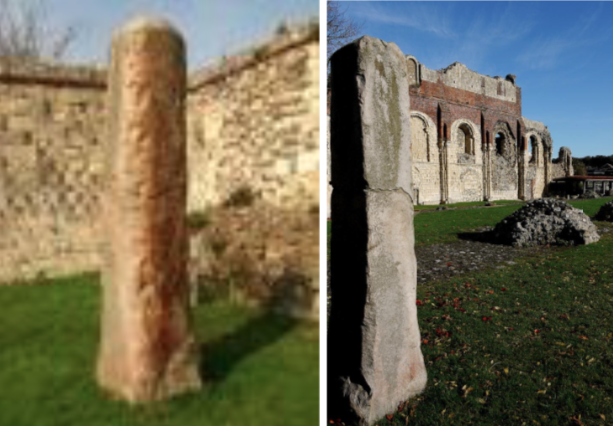
Wheel of Life Full Moon Meditation
Friday, 19th November, 2021, at 12 noon local time.
Sun in Scorpio, Water, the Magician;
Moon in Taurus, Earth, the Builder, and a Lunar Eclipse.
SCORPIO SUN (‘The Alchemist/Initiate’) opposite moon in TAURUS (the ‘Builder’ and the test of the ‘Sword in the Stone’)
Standing stone, St Augustine’s Abbey, Canterbury
founded by King Ethelbert, in 597 [© rayyaro – Flickr.com]
The Ancient Cross / Standing Stone - or stones - in Kent. St Augustine's Abbey was originally created as a burial place for the Anglo-Saxon kings of Kent, it is part of the Canterbury World Heritage Site, along with the Cathedral and St Martin's Church. …
‘The standing stone (the 'Sarsen Stone') in the left foreground is known locally as 'St Augustine's Cross', and is believed to have been the focal point of sermons given by the Saint before and during the building of the Abbey. It was discovered, together with a smaller version, during excavations in the 1960's and erected in this position here. It does not necessarily belong to the site at all.’
Guarding our Heritage of the Sacred:
What makes an ancient stone remain standing throughout prehistory and bombing in WWII at St Augustines Abbey? The following image of the sacred ‘rose centres’ of London suggested by Peter Dawkins, shows the significance of Canterbury within London’s geomantic ‘rose’. Many sacred stones down history create our ancestoral sanctuaries that strengthen our guardianship of heritage.
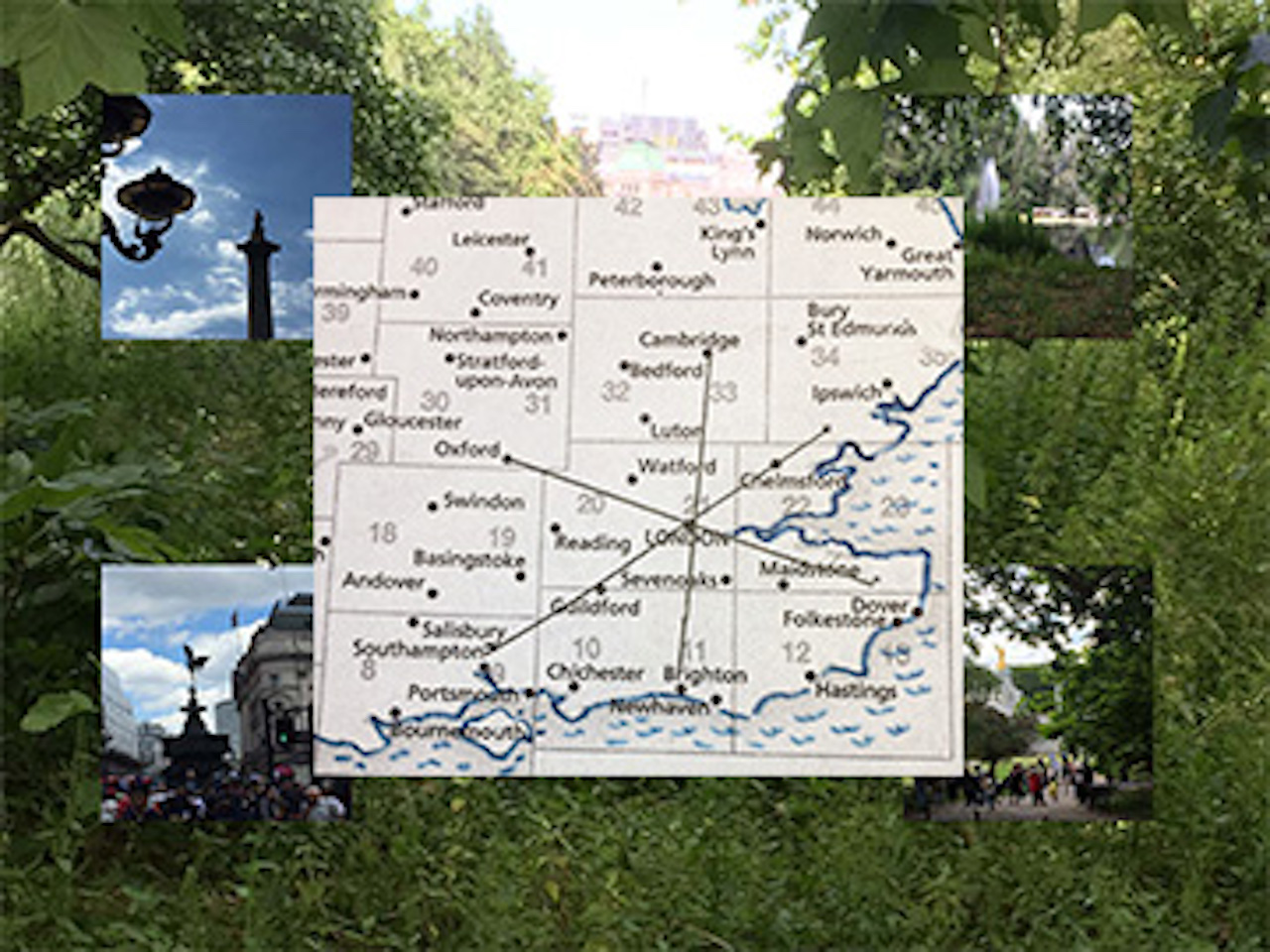
The Rose Centres of London (suggested by Peter Dawkins)
The Arthurian Grail myth:
The sun-quest of our conscious mind seeks to understand our inner magician – Scorpio – while Taurus intuitively suggested we take the sword of our spiritual intent, and draw it out of the ‘stone’ of daily life. How has this been symbolised in our British zodiac, and what relevance has it to our own daily lives?
In London Scorpio cusps Sagittarius, and all round the city can be found a ‘rose sanctuary’ in the landscape, full of our ancestors’ questing to become a ‘guardian of the mysteries’ and protectors of heritage. This ‘seige perilous’ symbolizes the final of the four tests - the ‘hallows’- of the Round Table of which Scorpio represents the ‘shield’ of guardianship. Taurus represent the ‘sword’ of our spiritual intent drawn out of the stone of incarnation.
For the high kings of Pridain, principally King Bran the Blessed – the quest round the wheel of life, is to achieve the hallows, and his head is said to have travelled from Ireland along the A5 6o the White Hill of Caer Troia (London). This is still one of our holiest of places where British kings have for centuries spent the night before being crowned. See Peter Dawkins: https://www.zoence.co.uk/infosheets-other/holy-head-of-bran-grail-pilgrimage-route.
‘The Grail involves the arousal of the kundalini through all the chakras, up to the crown for enlightenment and illumination.’
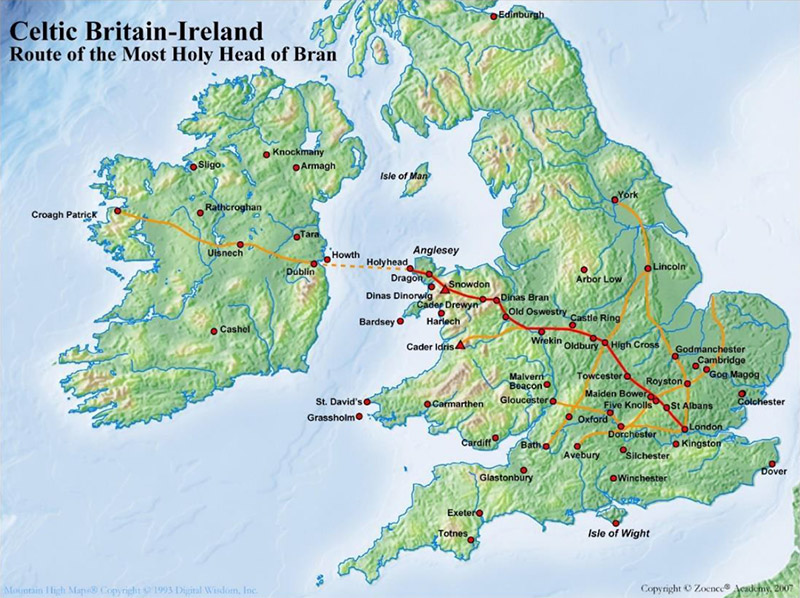
Bran the Blessed enacted this mythological journey of the soul along the ancient path of Watling Street to the White Hill (Tower) of London. [Peter Dawkins https://www.fbrt.org.uk/wp-content/uploads/2020/06/Royston_13th-Sign_British-Zodiac.pdf]
The British Zodiac and the constellations of Arachne Ophiucus: ‘Sarn Wydellin, the ancient sacred way through Britain that links London with Ireland via Snowdonia and ferry from Holyhead in Anglesey, is associated with the Celtic myth of Brân, the demigod and Grail King. Although winding like a serpent through the British landscape, this Grail route nevertheless follows two radii of the British Zodiac that are important axes in the twelve-fold pattern of the Zodiac, used in both the equal and unequal sign versions. The south-easterly axis of this Grail route, from High Cross to London, forms the cusp of Sagittarius-Scorpio. The north-westerly axis of the Grail route, from High Cross to Snowdonia, forms the cusp of Taurus-Aries.’ https://www.zoence.co.uk/zodiac/british-landscape-zodiac/
Our cultural myths embedded in the landscape: The hallows follow the fixed signs of the zodiac/wheel of life:
1. The ‘stone’ – Aquarius ‘the Truth Seeker’ – the foundation stone of truth which is dormant and needs to be drawn out. [search begins]
2. The ‘sword’ – Taurus ‘the Builder’– the sword of truth, goodwill, speaks the voice of the intuition – [in preparation and friendship]
3. The ‘spear’ – Leo ‘the Leader’– the spear of clear sight and understanding – [in action]
4. The ‘shield’ – Scorpio ‘the Magician’– the shield of sacrifice and service, guardian of truth and love in action [fulfillment of the cycle, we aim for the centre ‘rose’ as a new petal of soul light]
‘The twelve knights and ladies of the Round Table are associated with the twelve signs, which are their ‘seats’; but there is also a thirteenth sign represented by the constellation of Ophiuchus, the ‘Serpent Master’ or ‘Serpent Bearer’. As the thirteenth sign, it signifies the thirteenth seat at the Round Table, wherein can sit only the heir to the throne. The heir is the Grail Knight, the one who has achieved the Holy Grail and thereby become a guardian of the Grail’. https://www.zoence.co.uk/zodiac/british-landscape-zodiac/
In the British Zodiac opposite Ophiucus the serpent bearer, is the Taurus/Aries cusp along which runs the A5 – Watling Street - along which ‘Bran’s Head’ was taken to the White Hill in Caer Troia (The Tower, London). This follows the Romano Celtic processional road of that marks out one of the four sections of the British Zodiac as an initiatory pilgrimage between the two 13th signs of the AA line, or traditional alchemical Milky Way pilgrimage route of personal resurrection.
In fact the straight roads were seen as linked to the law of ‘kings peace’ by William the Conqueror: ‘The Laws of William the Conqueror reaffirm 'on the three royal roads, that is Watelinestrete, Ermingstrete, and Fosse, whoever kills a man passing through the country, or makes assault on him, breaks the King's peace.' A later Norman version of these laws reinstates the Ickneild Way: 'on the four roads, that is Watlinge stret, Erminge stete, Fosse, Hykenild, whoever on any of these four ways kills another who passing through the country, or assaults him, breaks the King's peace.' [In Heaven as on Earth’ Royal roads and the Milky Way’ by Penny Drayton: https://www.indigogroup.co.uk/edge/Royalrds.htm]
The Round Table in the landscape ‘grail’ reveals the cycle of initiation adopted by ancient kings of Britain followed by the Knights Templar. The landscape is highlighted by their circular churches and preceptories. They too followed the tradition of being tested at the four key points of the landscape grail/zodiac, and the grail pilgrimage route along Watling St.
SCORPIO landscape hold key points of the grail land for the Knights Templar: at Cambridge, Royston, St Albans and Little Maplestead:
1. Cambridge
Church of the Holy Sepulchre, Cambridge, set up by he Knights Hospitaliers:
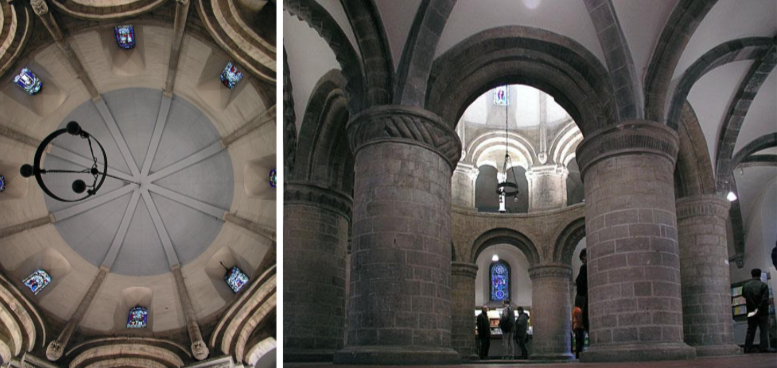
The eight sections of ceiling and the pillars of the round church in Cambridge.
‘Both the Templars and the Hospitallers had strong links with Palestine, of course, and the usual explanation for the shape of these churches is that they were built in imitation of the Church of the Holy Sepulchre in Jerusalem. This gives us a bit of a puzzle in Cambridge.. The Round Church here was founded by a 'Confraternity of the Holy Sepulchre', who were given the land by Abbot Reinald of Ramsey between 1114 and 1130. This aside, nothing is known about the Confraternity. Some sort of Jerusalem connection seems likely, given the date and the dedication, but this is inevitably speculation.’ http://druidic.org/camchurch/churches/camsepulch.htm
2. The Royston Cave
beneath a crossroads in town. Royston is in line with Cambridge and St Albans as part of the ‘Ophiucus’ snake bearing figures in the Scorpio section of the British Landscape Zodiac.
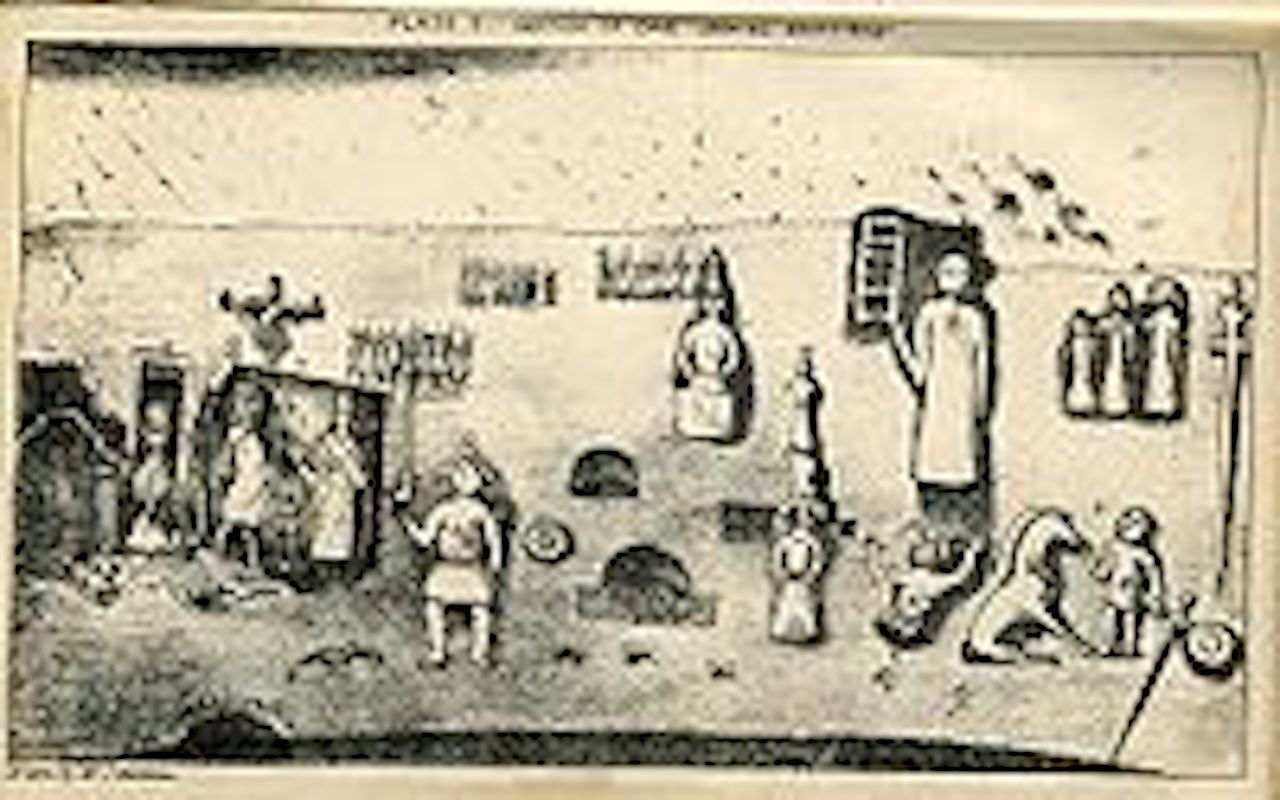
Plate II from Joseph Beldam's book
The Origins and Use of the Royston Cave, 1884 showing more of the carvings.
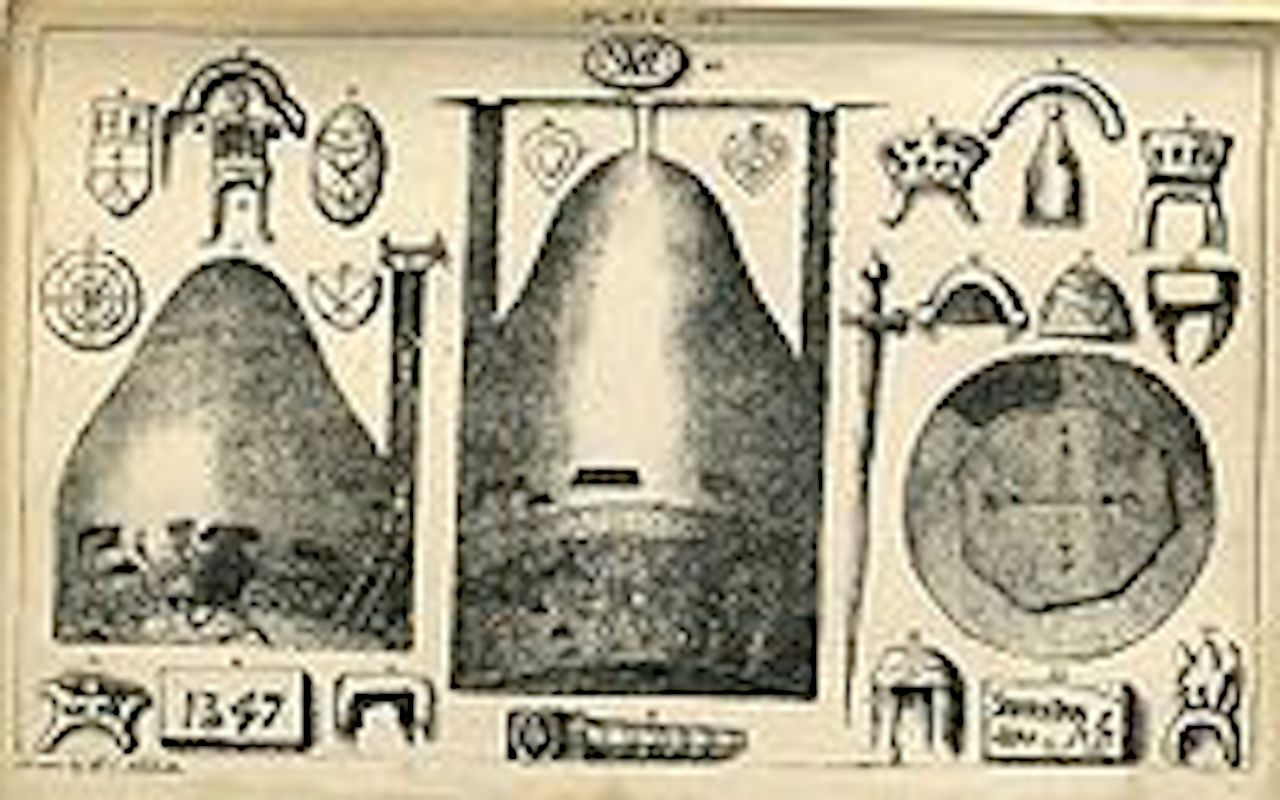
Plate III from Joseph Beldam's book ‘The Origins and Use of the Royston Cave,’ 1884, showing the shape and floor plan of the cave, which could have been a repurposed storage barn with visible alchemical symbology.
Opposite Taurus and the 13th Sign of Auriga, this Templar initiatory cave coincides with the constellation of Ophiucus, the second 13th sign – representing the taming of the dragon of the kundalini and the conclusion to the cycle of initiation:
‘It signifies the start of a new cycle of time and initiation at a higher evolutionary level than before. The midwinter sun has completed on complete circuit of the ecliptic and is now started on the next circuit. Ophiuchus is paired with its complementary 13th sign (i.e. there are two 13th signs of the Zodiac), Auriga, in the zodiacal sign of Taurus. Auriga, the ‘Charioteer’, in the 13th sign in respect of the midsummer sun. In terms of the British zodiac, mythology and traditions, it is probably Ophiuchus that is the more important one. The heart of Ophiuchus is marked by Royston… Seen this way, the Royston Cave with its Knights Templar cave paintings is of great significance. It lies at he intersection of Icknield Way and Ermine Street. In addition the serpentine Michael and Mary energy lines that compose the ‘dragon’ aspect of the St Michael ley Line, as dowsed by Hamish Miller, cross in the cave.’
“[Royston] is entirely suitable for it marking the heart of Ophiuchus, who signifies the resurrected soul – the one who has mastered and raised (or transmuted) the dragon that is his own lower self. The heart of such an initiate is symbolised by the rose, and the Red Cross knight (St George) is also the Rose Cross knight, for the rose as well as the red (or golden) cross is his symbol.”
[Peter Dawkins: https://www.fbrt.org.uk/wp-content/uploads/2020/06/Royston_13th-Sign_British-Zodiac.pdf]
Its name came from the ‘Royce Stone’ above the cave, a stone cross erected at the cross roads by the Lady Roisia. Together with Little Maplestead church, it signifies a special point in the year when a cycle is completed. The rose consists of two lemniscates and radiates in all directions, and these Templar places of initiation reveal the quality of ‘magician’ and transformer, the achievement of illumination by the questing aspirant.
‘The egg in which the initiate is incubated, dying in order to be reborn or renewed in a more glorious state of being (or dissolving psychologically, like a caterpillar in its pupa in order to become the butterfly), is provided literally by the Royston Cave – a bell or bottle-shaped cave carved out of chalk. www.fbrt.org.uk | www.francisbaconresearchtrust.org.uk
Rory Duff, geophysicist and dowser (https://roryduff.com) believes these sacred sites in the sign of Scorpio follow the science of what he sees as ‘nodes’, and his studies of the ‘rose symbol’ found on ancient carvings at the wrists of sculptures (see his image of an Assyrian Wall relief of Lord Enki or ‘lord of the mound’ – the Tower of London reflecting this ancient tradition of sovereigns and mounds as power centres of kingship). These represent the pattern that can be dowsed at the nodes of energy represented in Templar symbols. Rory has dowsed Royston to be at the centre of two powerful energy lines: the Michael and Maryl lines. [see his book ‘Grail Found’ [roryduff.com] ‘A lord of the mound could now easily be translated as a God of the Mound or a God who came from the Mound having come through a portal from a World of the Gods.’
The symbols connect to the Templar tradition of the search for the ‘holy grail’. Royston seems to play a large part in identifying the energies of the landscape and the ‘star maps’ developed by Peter Dawkins in relation to the British Zodiac and the traditions of alchemical transformation where landscape and human conscious transformation overlap. Was Lady Roisia playing the part of a ‘lord/lady of the mound’ or ‘maiden of the rose’?
3. Little Maplestead Templar Church
A Pilgrimage in 2018 with Julia Cleave in which she says: ‘At this Scorpio point of the year, we will pilgrimage to Little Maplestead Church, one of only five remaining round churches in England, modeled on the Holy Sepulchre at Jerusalem. Dedicated to St John the Baptist, it was the church of a Commandery of Knights Hospitaler. Sited NE of Temple Church in London, it represents symbolically the cornerstone associated in ritual with the Knights Templar higher degrees.’
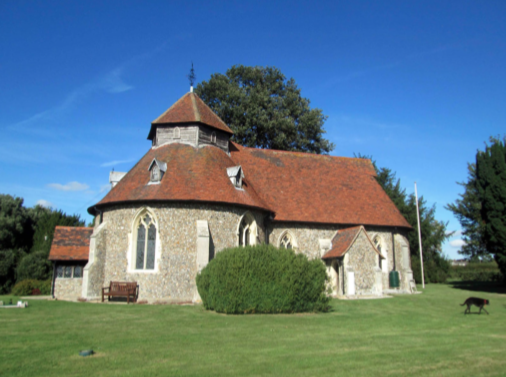
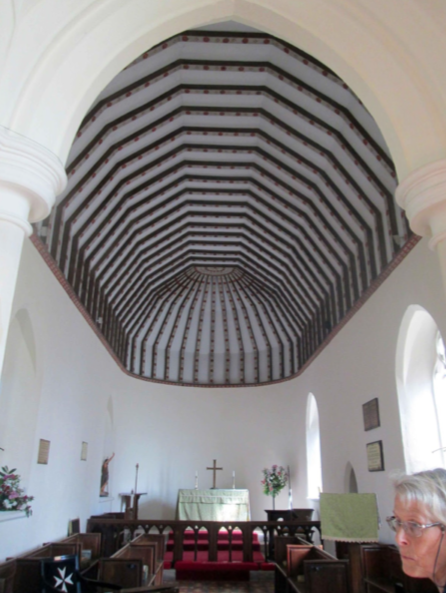
Little Maplestead Templar Preceptory/Church of John the Baptist, with its rounded apse and ‘boat shaped’ ceiling, believed to represent the theme of ‘fishers of men’ from the new testament.
The Rose Centres of London
Do the prehistoric remains in Scorpio give us more clues to the roots of our sacred landscape? Other sacred sites in Scorpio include the prehistoric henges that seem to guard the gateway to the landscape of Canterbury, at the end of the North Downs. When we look at Peter Dawkins’ ‘saltire cross of London’ we find that Canterbury and Oxford are equidistant to the London Stone, as are the city landscapes of Colchester and Winchester with different mileage. This phenomenon draws us into a deeper quest for landscape alchemy, and the role of Scorpio ‘magician’s’ alchemical geomancy.
Imagine lines between key national cities: Canterbury and Oxford (the religious and educational centres), Winchester and Colchester (the kingly seats of Kings Alfred (succeeding the occupation of the Danes) and Coel (during the time of the Roman occupation).
As if to emphasise the prehistoric significance of the landscape at the end of the Walting Street ‘Milky Way’ royal road, we find Henges at Sittingbourne, (at Iwade Meads, Swale, Kent - https://www.kentonline.co.uk/sittingbourne/news/dig-uncovers-henge-dating-back-1641/) ….
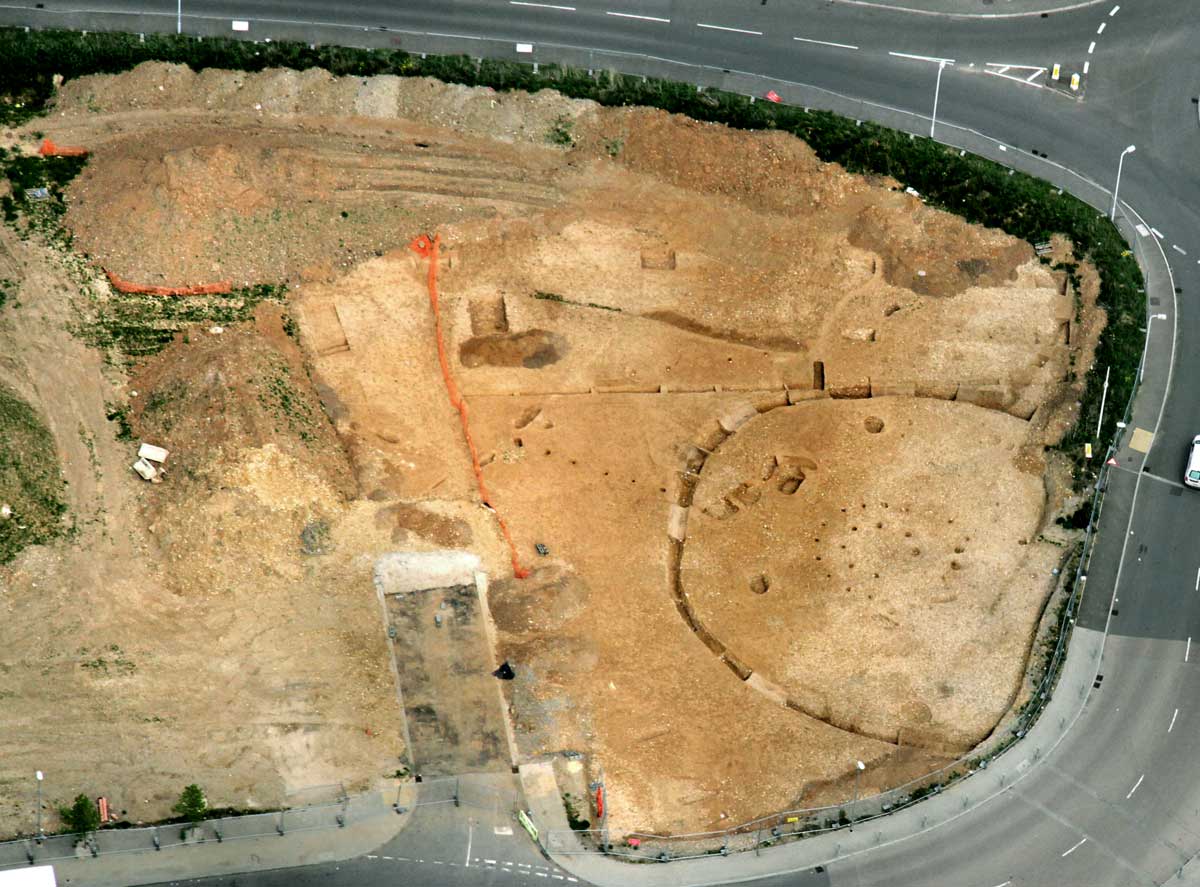
…and at Holligbourne on the North Downs [https://www.megalithic.co.uk/article.php?sid=31084]. They seem to take the role of gateways to the North Downs, and the old road into London from Canterbury (Watling Street). The landscape is seen as the gateway for invasions of both the Romans and later the Jutes.
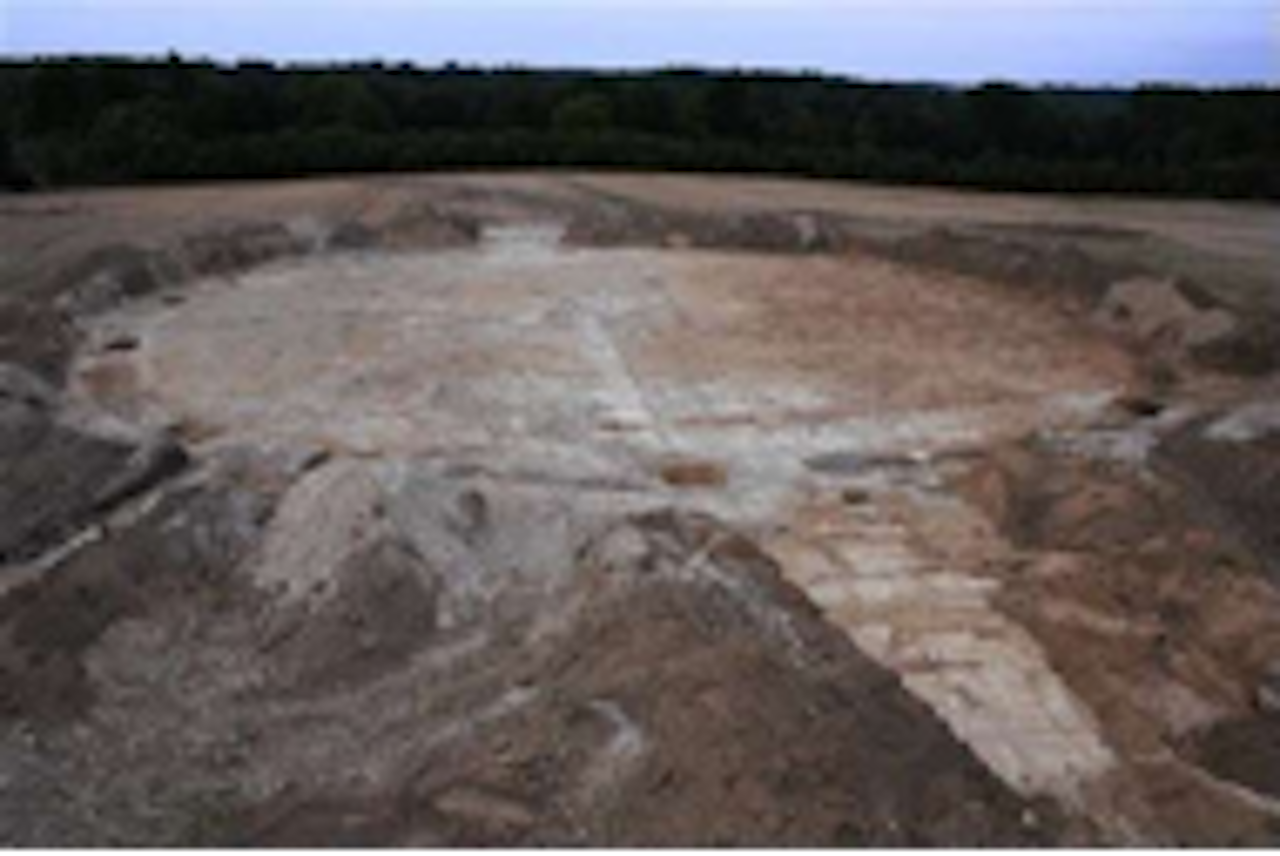
Canterbury Cathedral holds a beautiful zodiac on the floor of Trinity Chapel. Does this signify its importance in the landscape, near where St Augustine landed, and later Anglo Saxon kings were buried in his abbey.
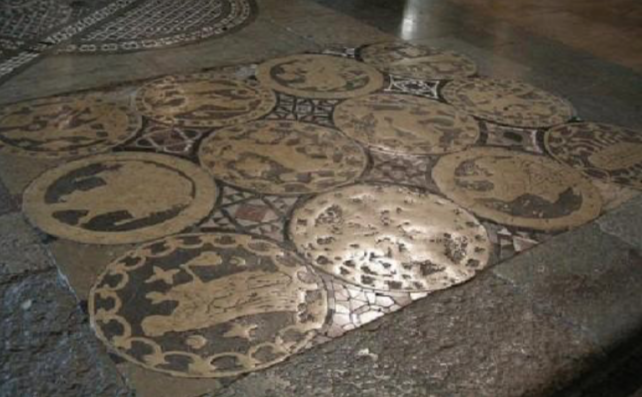
https://m.megalithic.co.uk/modules.php?op=modload&name=a312&file=index&do=showpic&pid=125776&orderby=dateD The Zodiac roundels Canderbury Cathedral, suggest its role within a larger British Zodiac.
Opposite Canterbury on the ‘Rose Cross’ of London is Oxford, with archaeological evidence of the remains of series of henges and barrows seen as a ‘major ritual complex’. It is oriented E-W resting underground beneath Keble College, the Kendrew Quandrangle, and University Parks:
‘This discovery adds considerable interest to crop-mark evidence (visible from the air) in The Parks, already well known since the 1970s, showing three large circular ditches, and other features, These are usually thought to represent leveled Bronze Age round barrows (tumuli) but may be too large (40–50m across) for that interpretation; further, smaller circles more likely to be barrows surround them, in The Parks, the University Science Area and Sackler Street’. https://www.megalithic.co.uk/article.php?sid=20196.
London seems to have been built up to represent a major holy sanctuary within larger star map of Britain, with the six major cities: Canterbury opposite Oxford; Colchester opposite Winchester, Cambridge opposite Brighton, together with four other centres of spiritual importance in between, such as St Albans, the White eagle Lodge at Liss, Hampshire, the Centre of the Seekers’ Trust at Addington, and Little Maplestead preceptory. These still form focal points for pilgrimage, and provide opportunities for a new impulse of transformation through loving the land and all creative initiatives by Humanity’s creative spirit within it.
In 2019 a group of pilgrims joined ‘Shakespeare in the Abbey’ walk-around performances, and an evocative walk between Trafalgar Square, Buckingham Palace, St James’ Park and Westminster. The remains of old trees descended from ancient woodland sanctuaries lined our reflective path.
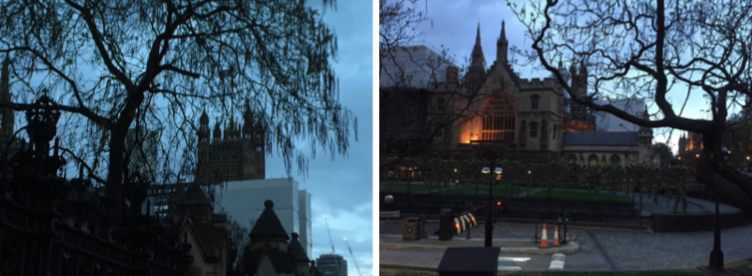
Thorney Island through modern woodland sanctuary trees, at dusk, 2019.
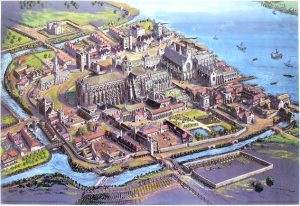
Old Map of Thorney Island, Westminster, Thorney Island Society: http://www.warwicksquarepimlico.co.uk/join-thorney-island-society/
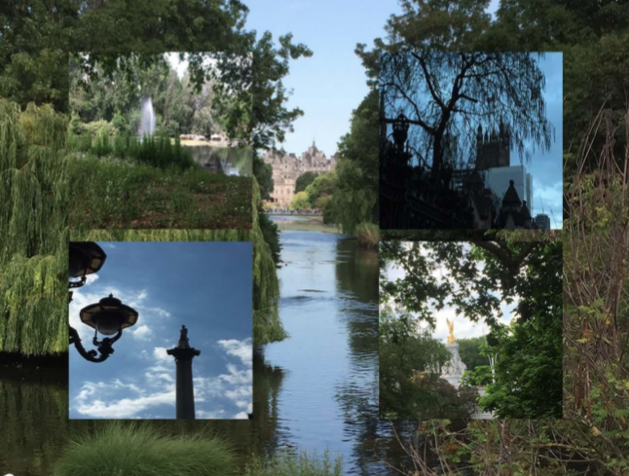
Vistas of Westminster from St James’ Park.
[C J Yonge, 2019]
This year in November an annual pilgrimage of a small group will be made to Little Maplestead church, in order keeps alive its sacred role in a greater London landscape. This links with the many country-wide movements supporting the COP26 climate summit, and within our ‘Grail Kingdom’ including the Maia Temple [Peter Dawkins: https://gatekeeper.org.uk/product/gkt-news-issue-19], many are linking through our sacred landscape to honour Humanity’s Creative Spirit of Renewal, and inspiration.
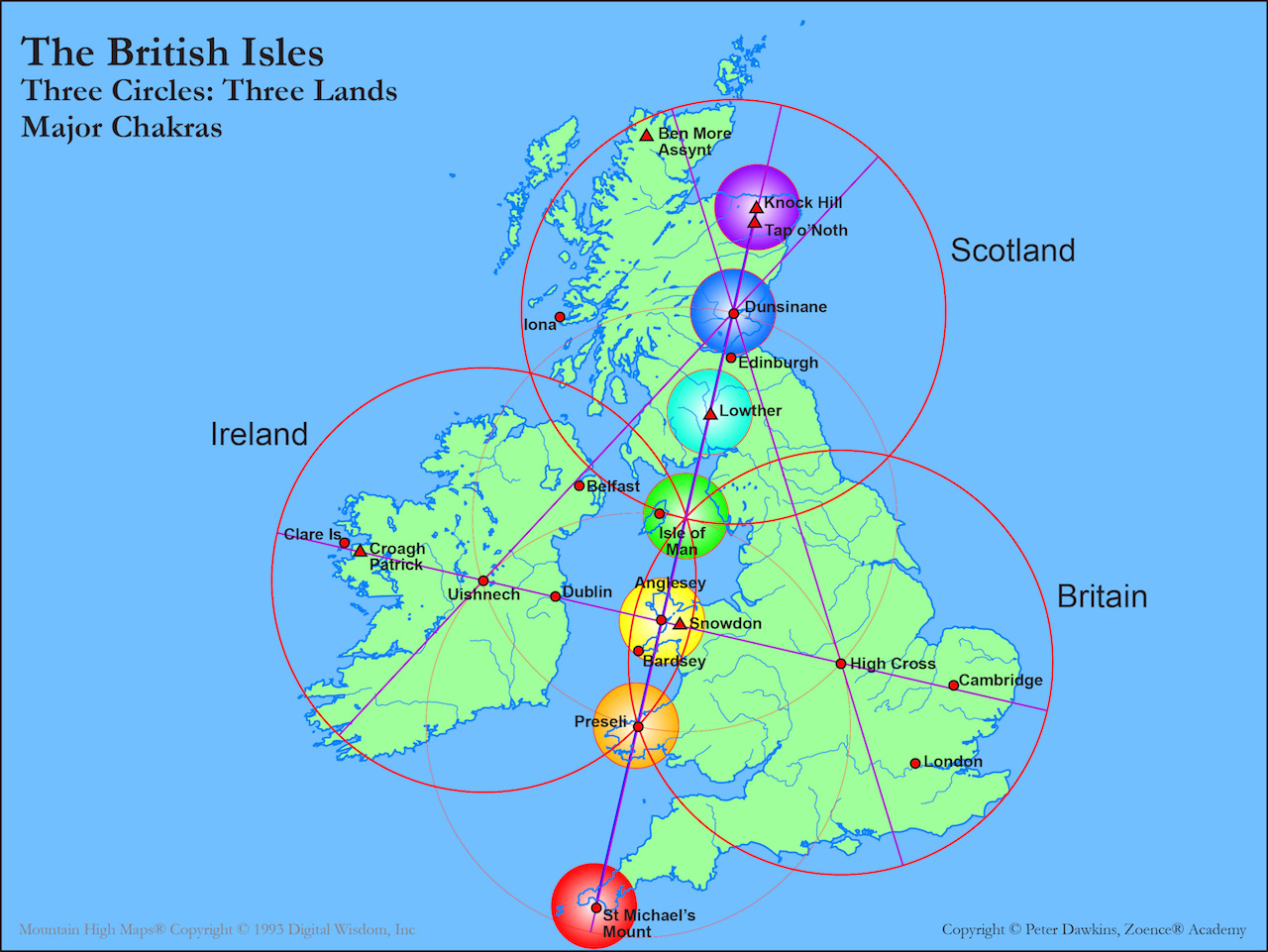
Editor: Charlotte Yonge 2021